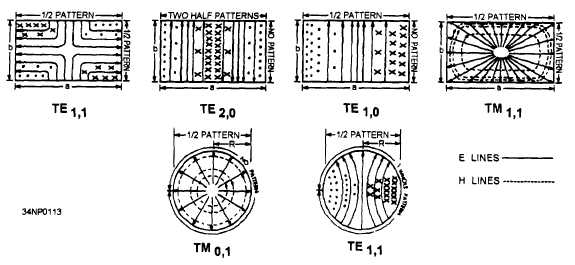Figure 3-40.—Various modes of operation for rectangular and circular waveguides.
WAVEGUIDE INPUT/OUTPUT
METHODS
A waveguide, as explained earlier in this topic,
operates differently from an ordinary transmission line.
Therefore, special devices must be used to put energy
into a waveguide at one end and remove it from the
other end.
The three devices used to injector remove energy
from waveguides are PROBES, LOOPS, and SLOTS.
Slots may also be called APERTURES or WINDOWS.
When a small probe is inserted into a waveguide
and supplied with microwave energy, it acts as a
quarter-wave antenna. Current flows in the probe and
sets up an E field such as the one shown in figure
3-41, view A. The E lines detach themselves from
the probe. When the probe is located at the point of
highest efficiency, the E lines set up an E field of
considerable intensity.
The most efficient place to locate the probe is in
the center of the “a” wall, parallel to the “b” wall, and
one quarter-wavelength from the shorted end of the
waveguide, as shown in figure 3-41, views B and
C. This is the point at which the E field is maximum
in the dominant mode. Therefore, energy transfer
(coupling) is maximum at this point. Note that the
quarter-wavelength spacing is at the frequency required
to propagate the dominant mode.
In many applications a lesser degree of energy
transfer, called loose coupling, is desirable. The
amount of energy transfer can be reduced by decreasing
the length of the probe, by moving it out of the center
of the E field, or by shielding it. Where the degree
of coupling must be varied frequently, the probe is
made retractable so the length can be easily changed.
The size and shape of the probe determines its
frequency, bandwidth, and power-handling capability.
As the diameter of a probe increases, the bandwidth
increases. A probe similar in shape to a door knob
is capable of handling much higher power and a larger
bandwidth than a conventional probe. The greater
power-handling capability is directly related to the
increased surface area.
Two examples of
broad-bandwidth probes are illustrated in figure 3-41,
view D. Removal of energy from a waveguide is
simply a reversal of the injection process using the
same type of probe.
Another way of injecting energy into a waveguide
is by setting up an H field in the waveguide. This
can be accomplished by inserting a small loop that
carries a high current into the waveguide, as shown
in figure 3-42, view A. A magnetic field builds up
around the loop and expands to fit the waveguide, as
shown in view B. If the frequency of the current in
the loop is within the bandwidth of the waveguide,
energy will be transferred to the waveguide.
3-18


